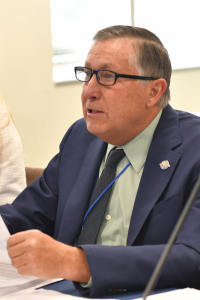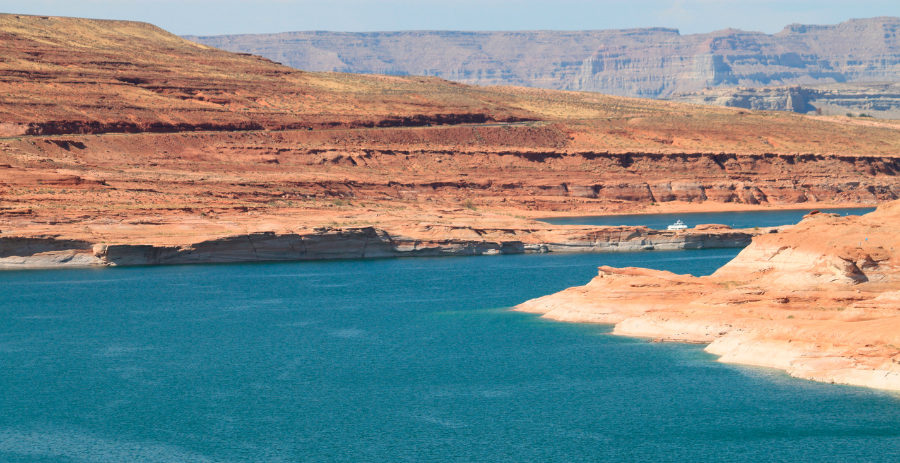The state’s top water official is making contingency plans for a court fight if a deal can’t be worked out with other states for how to divide up Colorado River water in 2026 and beyond.
Tom Buschatzke wants Gov. Katie Hobbs and state lawmakers to give him $1 million in what he is calling a “set-aside appropriation” in case there is no agreement – at least not to the state’s satisfaction – in the ongoing negotiations over the river.
Ideally, he said, it won’t be necessary and the seven states, various tribes and federal agencies will work out a deal. But the director of the Department of Water Resources told Capitol Media Services that is far from a sure thing.
“We don’t want war, we want peace,” he said of himself and water officials from the other six states that share river water. “We want a collaborative solution.”
That also means working it out among themselves versus having something imposed on them by the courts or Congress, a fiat that could result in orders to make nearly impossible reductions in Arizona’s access to the river.
And it’s not like conditions are likely to get better.

“We’re getting projections from climate change scientists that our future is more drier – and maybe even more drier than maybe over the last 20 or so years,” Buschatzke said.
The immediate problem is that the federal Bureau of Reclamation says that climate and other projections show that total available water in the system will need to be cut by up to another 4 million acre feet a year – above and beyond already imposed and voluntary reductions.
More to the point, the upper basin states of Colorado, New Mexico, Utah and Wyoming don’t want to share in the burden. Instead, they want all of that reduction to come from the lower basin states of Arizona, California and Nevada.
“There is a significant possibility that this process could result in litigation between the states,” Buschatzke said. “In the event that there is litigation, the most likely venue for the proceedings would be federal court, the U.S. Supreme Court, or both.”
Hence, he said, the need for the money.
“If the collaborative and cooperative partnership does not bear fruit, Arizona may need to react/engage in legal action to protect its current 2.8 million acre feet of Colorado River entitlement,” Buschatzke said. “Litigation can be a very lengthy and expensive process.”
But the request for funds is more than about having $1 million set aside to hire lawyers should a court fight become necessary. Buschatzke also is seeking to send a message to the other states that Arizona will not be bullied.
“It is a significant commitment to demonstrate Arizona’s commitment to protecting its entitlement from the Colorado River,” he said.
All this comes as the current guidelines for operations of the river expire at the end of 2025. And the director of the Department of Water Resources said his agency is currently involved in negotiations with the seven “basin” states that all claim a share of the Colorado River as well as the U.S. Bureau of Reclamation.
What Buschatzke wants is to maintain its current entitlement to 2.8 million acre feet a year. An acre foot is generally considered enough to supply three homes for a year. That, on paper, is Arizona’s share of the 15 million acre feet of river water.
States, however, haven’t taken their full allocation for years amid historically dry weather.
The lower basin states are entitled to 7.5 million acre feet. This past year they took less than 5.9 million acre feet.
And this year Arizona is taking only about 1.9 million acre feet of its 2.8 million allocation, agreeing to leave water in Lake Mead to ensure that it does not dry up to a point where no water flows through the dam.
Now it’s about what happens next.
The Bureau of Reclamation is set to issue an Environmental Impact Statement in December. That should have the final numbers of what the agency expects to be available in Colorado River water for the foreseeable future.
A balanced approach, said Buschatzke, would be for half of that 4 million acre feet, or whatever the final number will be, allocated among the upper basin states, with the balance among the lower basin states. Put simply, it’s easier and less painful on any one state if all share.
And that’s particularly important for Arizona which has a “junior priority” over the available water.
But to this point, he said, the upper basin states want no part of it. In fact, Buschatzke said, the upper basin states want more water left in Lake Powell, something he said would have the ripple effect of making less water available for Lake Mead.
“We can’t come to a place where Lake Powell is three-quarters full and Lake Mead is essentially empty,” he said.
What’s also important, said Buschatzke, is coming up with more than a stop-gap plan that lasts just three or four years. He said any agreement should go out at least 20 years or more.
All this comes back to Buschatzke’s decision to request $1 million for the legal fight that may be on the horizon.
“I have a responsibility to do due diligence and be prepared for multiple potential outcomes,” he said.
“One of those potential outcomes could be a time at which the Central Arizona Project could be completely dry because of certain interpretations of what a junior priority might mean,” Buschatzke said. “And I think you could imagine that that would be quite an economic and political disaster for that outcome.”
A spokesman for Hobbs said no decision has been made whether to include his request in what she submits to the Legislature in January.
And if its not funded this coming year?
“Arizona faces the possibility of being unprepared for legal action regarding its Colorado River entitlement in the event that the current collaborations and negotiations do not bear fruit,” he said.
(Except for the headline, this story has not been edited by PostX News and is published from a syndicated feed.)

